To become a master at playing the piano, you must first master the Grand staff. It is an essential reading concept. The Grand Staff is used in almost if not all classical and complex music pieces.
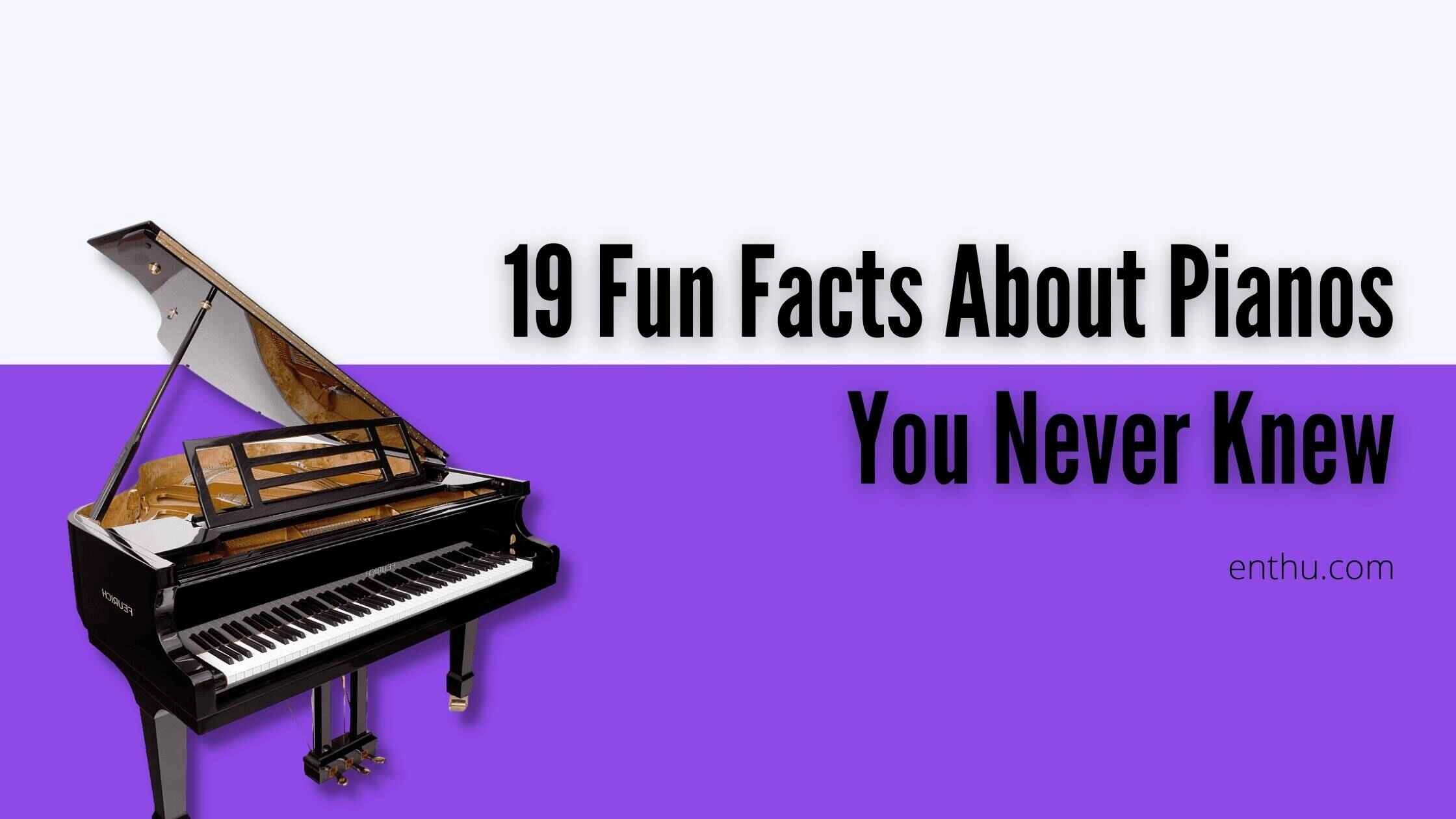
Composers like Beethoven, Mozart, and the Beatles were all respected and held a special place in the history of pianists. All of them were proficient with reading the Grand staff and creating them while they composed a new piece.

For the untrained, it is a somewhat confusing concept. We get it, the piano is a work of art, and only a few can master it. But imagine yourself playing the piano in front of an audience.
How awesome would that be? So, if you want to become a Piano Pro, let us look at Grand Staff in Piano and find out what it means.
What is a Grand Staff?
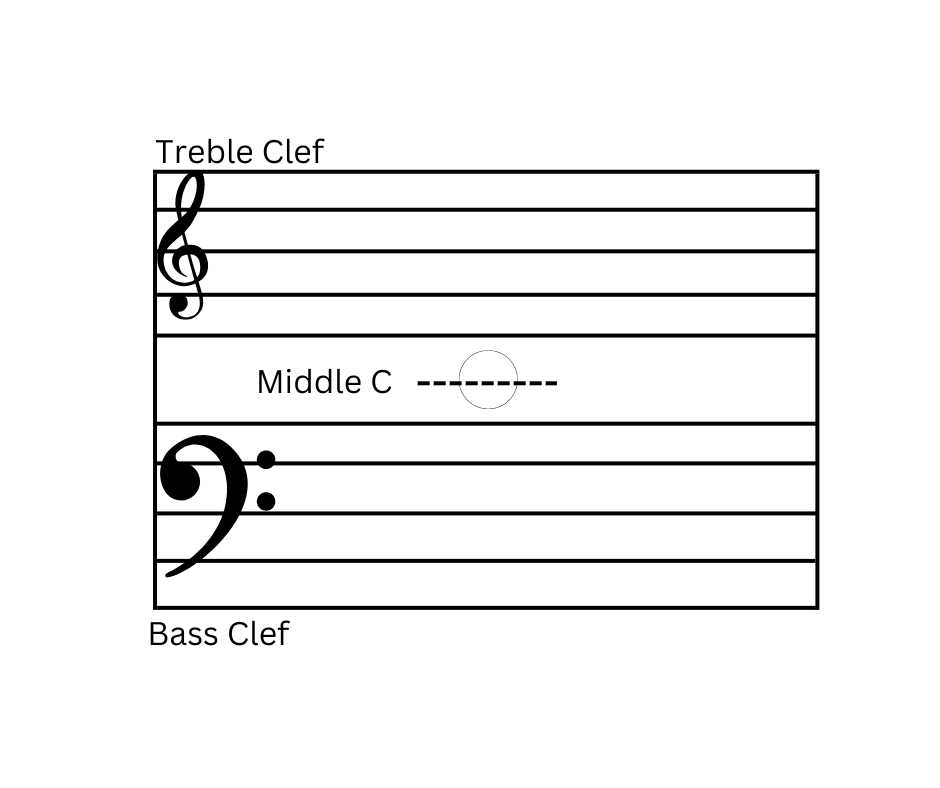
Yes, yes, I will get into Grand Staff. But first, let me tell you what staff and clef are. A staff has four horizontal lines with four spaces between them. Here, each line and space represents a different musical note.
Clef appears on the left of a staff, in the beginning of each line. It helps musicians to orient themselves. Without clefs, it will be difficult to understand which notes to refer while playing. Most piano music is written in the this format.
It makes things easier for you to figure out which hand is playing what. Initially, this seems like a lot of detailed information to take in. The pressure that most beginners feel is - “You have to read and play simultaneously!?”. So what exactly is it that we’re talking about here? Well…
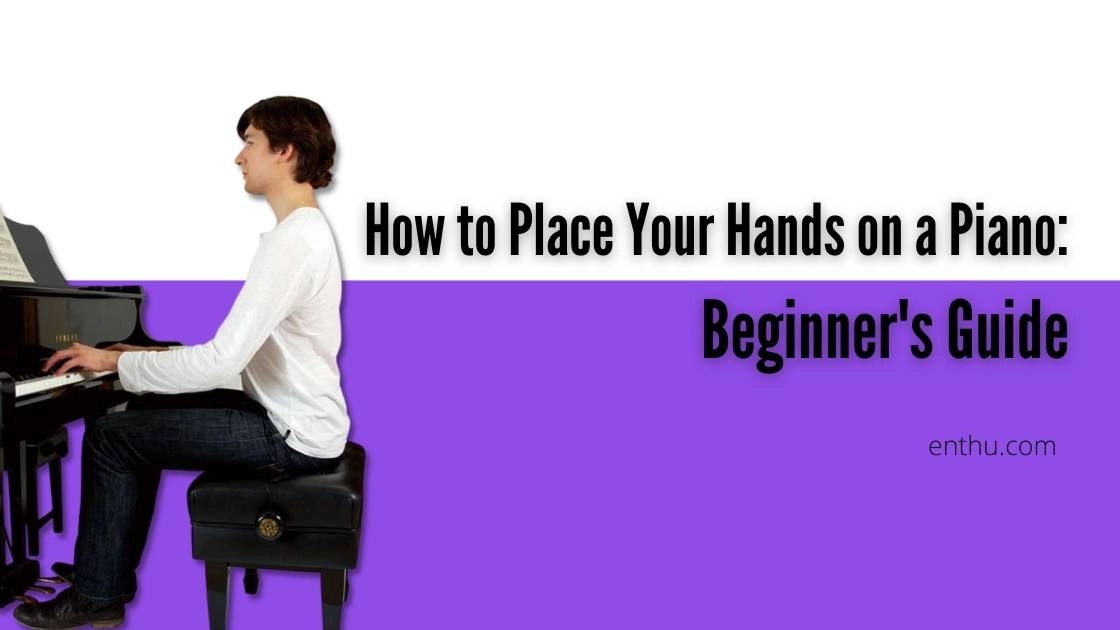
The Grand Staff combines the treble clef and the bass clef in a single composition. This type of combination isn’t unique to a piano. Other instruments like the keyboard, organ, and harp have them.

It takes some time and baby steps to figure out but is very useful in the long run if you want to master the piano.
The Components of the Grand Staff
The Grand staff combines the treble, and the bass clef in a single composition joined together with a bracket. Since the piano has a vast range, reading one sheet at a time wouldn’t be enough and very inefficient.
And having two sheets to switch back and forth would be troublesome since the piano is played with both hands. This is why we use the Grand staff. I am sure you are curious to know how treble and bass clef actually work. This table will give you a clear idea.
Notation | Treble | Bass Clef |
Hand to be used | Left | Right |
Location on the notation sheet | Top | Bottom |
Denoted by | G clef | F clef |
Pitch | High | Low |
1. The Bracket

The bracket on the left side joins the two Staff. It signifies that, while playing piano, you are to read and play both Staves simultaneously. And, that's where the real challenge lies!
To read the Grand staff, you must get comfortable reading the treble and the bass clef individually.
2. Note Placement
In general, the upper Staff’s notes are played by the right hand, and the lower staff notes are played by the left hand (as I had mentioned in the table above).
Simply put, your right hand will play the Upper Staff and left hand the Lower Staff. Just keep this piece of information in mind while creating your sheet music.
3. Grand Staff Lines
There are two Staff Lines - one for treble and one the other for bass clef. The two Staves are connected by a vertical bar on the left side. These bar lines run straight through the Staves, combining them to form one giant Staff.
On the treble clef, the first five alphabets of the octave, i.e., E-G-B-D-F, are situated on the upper Staff. While the following four alphabets of the octave, i.e., F-A-C-E, are taken on the spaces between these lines.
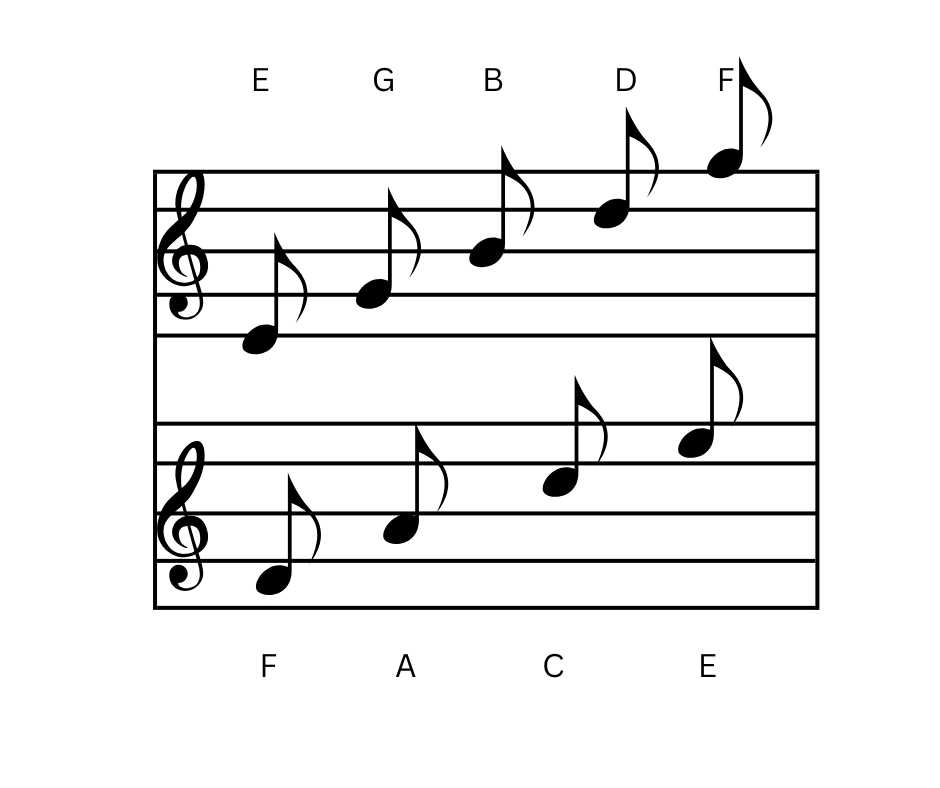
The notes G-B-D-F-A lie on the lines like the treble clef. The notes A-C-E-G lie in the space between the lines.
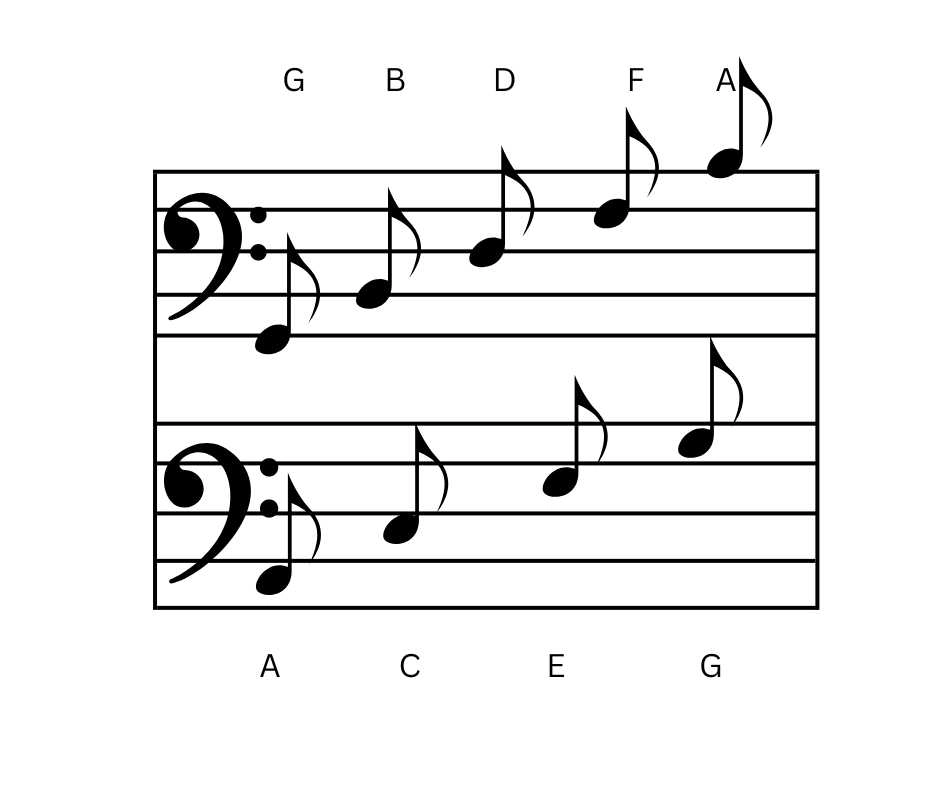
4. Middle C
You’ll also notice a big gap between the two Staves. Can you guess the name? (Hint: It is mentioned in figure 1) Yes, you are absolutely correct! It is called Middle C.
Now you might ask, what is the purpose of Middle C? It divides the treble clef from the bass clef so that you won't have problem differentiating which hand needs to play which note.
Are you ready to play the most melodic music with the help of Grand Staff? Read Most Beautiful Piano Pieces to find out.

5. Ledger Lines
The bass clef ends on A, and the treble clef ends on E, so what about the times when you will want to play B, C, C-sharp, D and D-sharp? The solution is simple! When we run out of lines, we imagine new ones.
These are called Ledger lines. This imaginary line extends the five-lined staff to six, seven, or even more than that. This offers a place for the notes above and below the staves.
It is simple to use. Read the notes between the Ledger Lines the same way would would read between Staff lines. Let your imagination guide you!
6. Remember
This We know that this is a lot of information to process at once. And remembering which note lies on which Staff can be a bit confusing. But this can be solved by a simple mnemonic device…
The phrase “Every Good Boy Does Fine” is commonly used to memorize the lined notes on the treble clef. And the space notes are memorized with the word “F A C E,” which conveniently spells out the arrangement of notes themselves.
There is a similar solution for the bass clef; for the space notes, we use the mnemonic “All Cows Eat Grass” and the phrase “Good Boys Deserve Food Always” for the line notes.
Benefits of Using Grand Staff
Grand Staff helps you recognize which hand plays which clef (right hand plays treble clef and left hand plays bass clef).
It makes playing music on the piano super-easy and super-smooth.
If you want to organize your notes, scales, chords, and chord progression, then using Grand Staff is the way to do it. Are you more interested in learning all the music theories? We have got you covered!
Are you more interested in learning all the music theories? We have got you covered!


Conclusion
Well, well! Learning the Grand Staff is of the utmost importance if you are a piano enthusiast. Yes, I am emphasizing ‘important’ as an indicator to show how meaningful this tune set is.
All great pianists, orchestra players, and your idols know how to play it as they have mastered it. So can you if you put in practice and determination while learning.
Also, to help you out on your journey, you can enroll in an online piano course! It not only saves your effort but also makes you a whiz at the piano.
FAQs
1) How do you write your own Grand Staff?
Draw eleven lines, five on top and five on the bottom, leaving space in the middle for the middle C. The top five are the treble clef lines, and the ones on the bottom are the bass clef lines.
Now draw a bracket on the left of these lines that connects these lines, and you have the basic setup of the Grand Staff (check our figure 2 for reference). You can add notes to your Grand Staff the same way we discussed above. It’s as simple as that, with enough practice.
2) What is the difference between a staff and a Grand staff?
A Staff is singular; it’s either the bass clef or the treble clef. They only indicate the pitch and notes. The Grand Staff combines two such staff with both bass and treble clef. The Grand staff is generally used for the instruments that require two hands to play.
3) Can you learn the Grand Staff by yourself?
Yes, it is possible to learn the grand staff from the comfort of your home, by yourself. But it is advisable to learn any form of Music theory under the guidance of a professional. You can learn how to play the piano and all about Grand Staff through online courses as well.

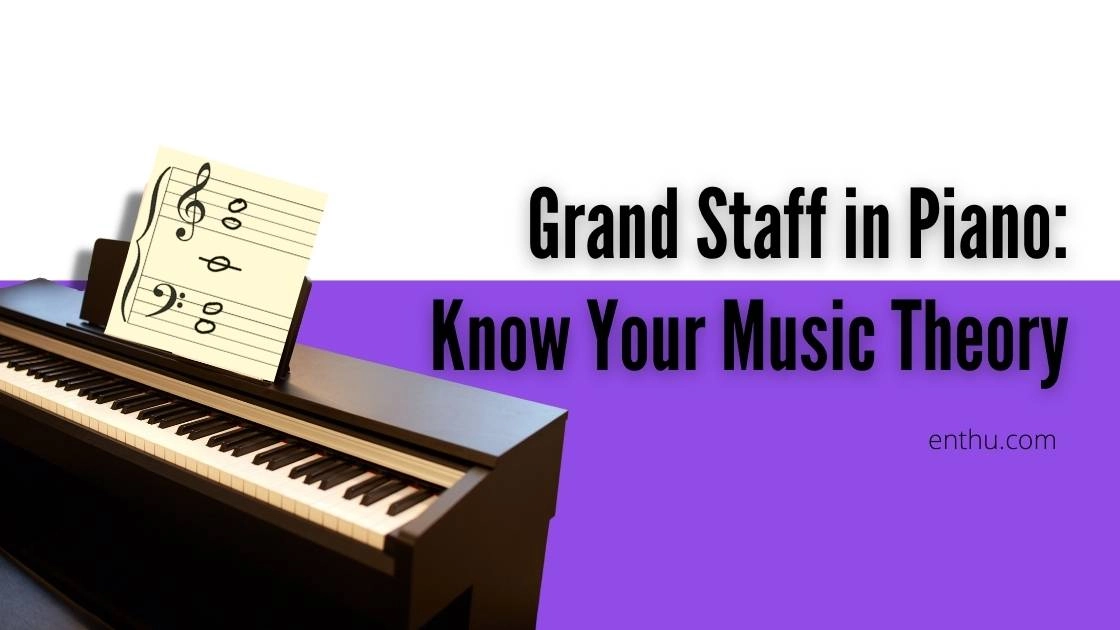
Comments